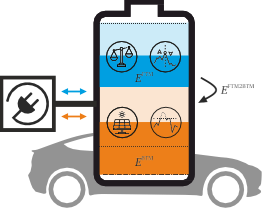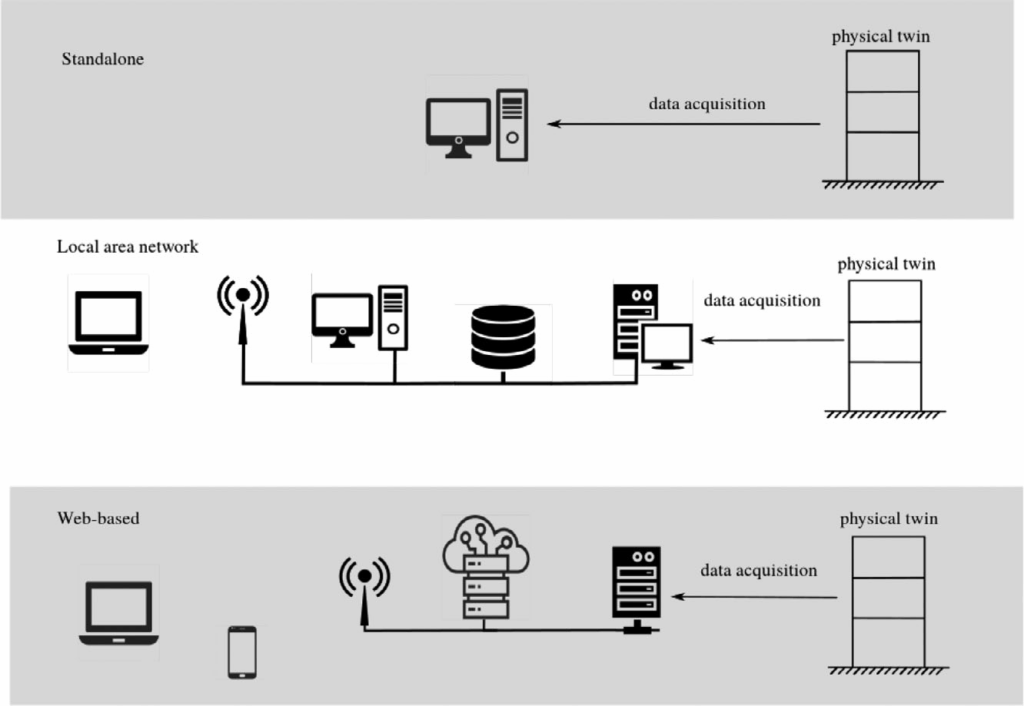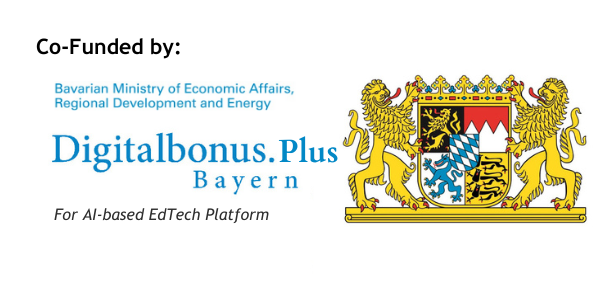The Rise of EdTech: Market Insights

Education Technology (EdTech) is revolutionizing the way we learn, teach, and develop new skills. From AI-powered tutors to immersive virtual classrooms, digital solutions are transforming education—making it more personalized, accessible, and efficient. At WiredWhite, we are passionate about exploring the latest trends in technology and their impact on global industries. In this article, we will break down the EdTech industry, its market size, key competitors, and predictions for 2030 and beyond. We’ll also dive deep into case studies, discuss the challenges and opportunities facing the industry, and explore the role of policy and regulation in shaping the future of education.
What Is EdTech?
EdTech refers to the application of technology in education to enhance learning experiences. This includes a wide range of tools such as Learning Management Systems (LMS), AI-driven tutoring, gamified learning platforms, and even blockchain-based credentialing. The primary goal of EdTech is to make education more accessible, engaging, and effective.

The use of technology in education has been growing rapidly due to several factors:
- Increased digital adoption – More institutions and businesses are shifting towards online learning.
- AI and automation – Intelligent systems can personalize education based on individual learning patterns.
- Remote learning surge – According to the UNESCO Report, The COVID-19 pandemic accelerated the demand for digital education solutions.
- Corporate upskilling needs – Businesses are increasingly investing in e-learning platforms for employee training.
EdTech solutions cater to a diverse range of learners—from K-12 and higher education students to professionals seeking lifelong learning opportunities. The integration of technology into traditional education systems not only enhances access but also introduces innovative teaching methodologies that can be tailored to meet the unique needs of each learner.
What Is the Global Market Size of EdTech?
The global EdTech market has been experiencing explosive growth in recent years. According to various market reports:
- In 2024, the EdTech market was valued at approximately $140 billion.
- By 2030, according to Forbes Analysis, it is expected to exceed $500 billion, growing at a CAGR of 15-20%.
Several factors contribute to this rapid expansion:
- Government investments – Many countries are allocating substantial funds to digital education initiatives.
- Advancements in AI and adaptive learning – Smart algorithms can customize learning paths for students.
- Mobile and 5G technology – Increased internet accessibility drives EdTech adoption in developing regions.
- Workforce reskilling needs – With automation on the rise, continuous learning is becoming a necessity.
This rapid growth underscores that EdTech is not just a passing trend; it represents a permanent shift towards a technology-driven educational model that has the potential to reshape economies and empower individuals worldwide.
Market Size of Our Specific EdTech Segment
Within the broader EdTech industry, there are multiple sub-segments, each with its unique market dynamics. Understanding the market size of a specific segment helps stakeholders identify opportunities and allocate resources effectively.
Some key segments include:
- Corporate E-Learning – With businesses increasingly investing in employee development, the corporate e-learning market is expected to surpass $300 billion by 2030.
- AI-Powered Education – Driven by the adoption of intelligent systems in classrooms and training environments, this segment is forecasted to exceed $50 billion by 2030.
- K-12 & Higher Education Platforms – These platforms are experiencing fast adoption, particularly in regions like Asia, North America, and Europe.
If our focus is on AI-powered education and virtual learning environments, we are operating in a high-growth market segment with significant investment potential. The convergence of technologies such as artificial intelligence, machine learning, and immersive media is driving innovation in personalized learning, making it an exciting time for new market entrants and established players alike.
Main Competitors in Our EdTech Segment
The EdTech landscape is highly competitive, with tech giants, startups, and niche players driving innovation. Some of the major competitors across different segments include:
Online Learning Platforms
- Coursera – Offers courses from top universities, targeting both students and professionals.
- Udemy – Focuses on skill-based learning with a marketplace model.
- edX – A non-profit initiative that provides free and paid online courses.
AI-Powered Education
- Khan Academy – Uses AI-driven recommendations to personalize learning experiences.
- Duolingo – A gamified language-learning app powered by AI algorithms.
- Quizlet – Offers AI-based flashcards and study tools for students.
Virtual Classrooms & Learning Management Systems (LMS)
- Google Classroom – A widely used tool in schools for organizing coursework.
- Microsoft Teams for Education – Provides virtual learning solutions for academic institutions.
- Moodle – A customizable open-source LMS used by universities worldwide.
Corporate Training & Upskilling
- LinkedIn Learning – Offers professional development courses integrated with LinkedIn profiles.
- Pluralsight – Focuses on IT and tech skill training.
- Udacity – Specializes in career-oriented nanodegree programs.
The competition in EdTech is fierce, yet the continuous evolution of technology and learning models ensures there is ample room for innovative players. Companies that can leverage AI, immersive learning technologies, and data-driven insights are well-positioned to capture market share and lead the next wave of educational innovation.
When evaluating education technology platforms focused on Higher Education, especially in Engineering and IT, it’s crucial to compare key aspects such as deployment model, technology type, end-users, and learning technologies. Below is a comparison of WiredWhite with three international competitors: Coursera, edX, and Udacity.
| Parameter | Coursera | Udacity | edX | WiredWhite |
| Sector | Higher Education | Higher Education | Higher Education | Higher Education |
| Deployment model | Cloud-based | Cloud-based | Cloud-based | Cloud-based |
| Technology type | Content | Software, Content | Content | Software, Content |
| End-User | Institutions (B2B), individual learners (B2C) | Enterprises (B2B), individual learners (B2C) | Institutions (B2B), individual learners (B2C) | Institutions, enterprises (B2B), individual learners (B2C) |
| Learning Technologies | Learning Management Systems (LMS), Adaptive Learning, AI | Learning Management Systems (LMS), Gamification, AI | Learning Management Systems (LMS), Adaptive Learning, AI | Learning Management Systems (LMS), Gamification, Adaptive Learning, AI |
In-Article Vocabulary
- Learning Management Systems (LMS): Digital platforms that facilitate the creation, delivery, and tracking of educational content. That’s often used by businesses and institutions for training and learning.
- Gamification: The incorporation of game-like elements such as points, badges, and leaderboards into non-game environments. It helps to enhance engagement and motivation.
- Adaptive Learning: A personalized learning approach that uses artificial intelligence and data analytics to tailor content to an individual learner’s needs.
- Deployment Model (e.g., Cloud-Based): The method by which a technology or software solution is hosted and delivered, such as cloud-based (hosted online) or on-premises (installed locally).
- Technology Type (of EdTech Platforms): The category of technological solutions used in education, such as artificial intelligence-powered tutoring systems, video-based learning tools, or mobile learning applications.
- End-Users: The individuals or groups who directly interact with a product or service, such as employees, students, or corporate trainees using an LMS or e-learning platform.
- Learning Technologies: The various digital tools and platforms designed to facilitate education and training, including LMS, virtual classrooms, AI-driven tutors, and mobile learning applications.
- Coursera: A leading online learning platform offering courses, specializations, and degrees from universities and companies worldwide. It provides high-quality content and partners with institutions to support both individual learners (B2C) and higher education institutions (B2B).
- edX: Originally a nonprofit initiative founded by Harvard and MIT, edX offers university-level courses in a wide range of disciplines. It also supports institutions with learning management systems (LMS) and adaptive learning technologies.
- Udacity: Focused primarily on technology and business education, Udacity partners with industry leaders to create “Nanodegree” programs. While serving individual learners, it also collaborates with enterprises for workforce training.

Forecast for EdTech in 2030 and 2040
The next decade will witness profound changes in EdTech. The industry is expected to move beyond traditional digital courses into hyper-personalized, immersive, and AI-driven education experiences. Let’s explore the key trends and forecasts for 2030 and 2040.
Key Trends Expected by 2030
- AI-Powered Personalized Learning: Adaptive systems will continuously tailor educational content to the needs of individual students, creating a highly personalized learning experience. This will not only improve engagement but also significantly boost learning outcomes.
- Immersive Technologies (VR/AR): Virtual reality and augmented reality will transform classrooms by creating interactive, immersive learning environments. These technologies will allow students to experience simulations that were previously impossible, making learning more engaging and effective.
- Blockchain Credentials: Blockchain technology could revolutionize the way we verify educational credentials, replacing traditional degrees with secure, verifiable digital certificates.
- Gamification & Microlearning: Short, engaging learning segments and gamified education models will continue to gain popularity, making education more interactive and accessible.
- Decentralized Learning Platforms: Peer-to-peer education models and decentralized platforms will emerge, enabling communities to share knowledge without the constraints of traditional educational institutions.
EdTech in 2040: The Future of Learning
By 2040, learning is expected to be fully integrated into daily life, driven by advances in technology:
- AI-Driven Neural Learning Interfaces: Direct brain-computer interactions may enable instantaneous learning, allowing individuals to acquire new skills at unprecedented speeds.
- Holographic Teachers and Virtual Classrooms: Augmented reality could give rise to holographic instructors, enabling dynamic, interactive lessons that feel as real as face-to-face instruction.
- Universal Learning Subscription Models: Similar to streaming services, learners may subscribe to global education networks, accessing courses, workshops, and interactive modules on demand.
- AI-Powered Career Optimization: Continuous monitoring of industry trends could allow AI systems to suggest personalized skill upgrades, ensuring professionals remain competitive in rapidly evolving job markets.
The EdTech of the future will go far beyond static content delivery. It will foster an ecosystem where education is a seamless, lifelong journey — constantly adapting to individual needs and societal demands.
Case Studies: Success Stories in EdTech
To illustrate the transformative power of EdTech, let’s look at a few success stories:
Case Study 1: Coursera and Global University Partnerships
Coursera has partnered with top universities worldwide to offer online courses, professional certificates, and degree programs. Their innovative model has enabled millions of learners to access quality education remotely. The platform’s success lies in its ability to integrate interactive content, peer-to-peer forums, and AI-driven recommendations that personalize the learning journey for each user.
Case Study 2: Duolingo’s Gamified Learning Approach
Duolingo has revolutionized language learning by incorporating game mechanics into its platform. With AI algorithms that adapt to the learner’s pace and proficiency, Duolingo has made learning languages both fun and effective. This model has not only increased engagement but has also significantly improved retention rates among users.
Case Study 3: Corporate Upskilling at LinkedIn Learning
LinkedIn Learning provides tailored courses to help professionals upskill in rapidly changing industries. By leveraging data analytics and AI, the platform recommends courses that align with career trajectories and market demands. This targeted approach has proven successful in bridging the skills gap in various industries, from technology to finance.
These case studies demonstrate that the successful integration of technology into education can drive both engagement and measurable outcomes—underscoring the enormous potential of the EdTech sector.
Challenges and Opportunities for EdTech
While the future of EdTech is bright, there are several challenges that stakeholders must navigate:
Challenges:
- Digital Divide: Despite global advancements, unequal access to high-speed internet and digital devices remains a barrier for many students, especially in developing regions.
- Data Privacy and Security: The increased reliance on digital platforms raises concerns about the privacy and security of student data.
- Quality Assurance: With the rapid expansion of EdTech platforms, maintaining high educational standards and accreditation is essential to ensure that learners receive quality instruction.
- Resistance to Change: Traditional educational institutions and educators may be hesitant to adopt new technologies, making the transition to digital learning models a gradual process.
Opportunities:
- Scalability and Accessibility: Digital platforms allow for scalable solutions that can reach a global audience, breaking down geographical and economic barriers.
- Personalized Learning Experiences: The integration of AI and adaptive technologies presents a significant opportunity to tailor education to individual needs, thereby improving learning outcomes.
- Lifelong Learning and Upskilling: As the job market evolves, continuous education becomes imperative. EdTech platforms are uniquely positioned to support lifelong learning and professional development.
- Innovative Business Models: The emergence of subscription-based models, microlearning modules, and decentralized platforms creates new revenue streams and opportunities for innovation.
- Collaborative Learning: Online platforms facilitate collaboration among learners across the globe, fostering a more inclusive and diverse educational environment.
Navigating these challenges while capitalizing on the emerging opportunities will be key to ensuring the sustainable growth of the EdTech industry in the coming decades.
Policy, Regulation, and Global Adoption
Also, government policies and regulatory frameworks play a crucial role in the adoption and evolution of EdTech. Many countries are now prioritizing digital education initiatives as part of their broader economic and social development plans. For instance:
- Government Funding: Investments in digital infrastructure and public-private partnerships are increasing worldwide. Such initiatives help bridge the digital divide and promote equal access to quality education.
- Regulatory Standards: Establishing standards for online learning, data protection, and accreditation is essential for maintaining the integrity and effectiveness of EdTech solutions.
- International Collaboration: Global organizations and governments are collaborating to share best practices and develop interoperable educational systems that can transcend national boundaries.
These policy measures not only support the growth of the EdTech market but also ensure that technological advancements translate into tangible benefits for learners at all levels.
Opportunities for Investors in the EdTech Sector
Investors have taken note of the tremendous potential of EdTech. With market valuations expected to grow exponentially over the next decade, the sector represents a lucrative opportunity for venture capitalists and strategic investors. Key areas of investment include:
- AI and Machine Learning Technologies: Investing in platforms that leverage AI for personalized learning offers high returns as these technologies become mainstream.
- Virtual and Augmented Reality: As immersive learning gains traction, startups developing VR/AR solutions for education are attracting significant funding.
- Content Delivery Platforms: Companies that provide high-quality content are poised for growth as demand for digital learning escalates.
- Corporate Training Solutions: With businesses emphasizing continuous upskilling, investments in corporate e-learning platforms are expected to yield substantial returns.
For investors, understanding the evolving landscape of EdTech and its future potential is key to making informed decisions that can drive innovation and financial success in this dynamic industry.
Global Perspective on EdTech Adoption
EdTech is not a one-size-fits-all solution—its adoption varies greatly across different regions:
- North America and Europe: These regions continue to lead in EdTech adoption due to strong digital infrastructure, high internet penetration, and significant investments in research and development.
- Asia-Pacific: Rapid economic growth, government initiatives, and a burgeoning middle class are driving robust adoption of EdTech solutions in countries like China, India, and South Korea.
- Latin America and Africa: Increasing mobile connectivity and innovative solutions are gradually boosting EdTech adoption in these regions.
This global perspective highlights that while market dynamics differ by region, the overall trajectory for EdTech remains overwhelmingly positive.
Final Thoughts
The EdTech revolution is just beginning, and the opportunities are limitless. Whether in AI-powered learning, corporate upskilling, or immersive education, the market is poised for exponential growth. At WiredWhite, we believe that technology will continue to redefine education — making it more accessible, engaging, and future-proof.
After all, The companies that embrace AI, automation, and innovative learning models will be the ones shaping the future of education in the next two decades. As we look forward to 2030 and beyond, the integration of advanced technologies will transform not only how education is delivered but also how we think about lifelong learning and career development. The future of learning is digital, personalized, and continuously evolving, and it is up to educators, policymakers, investors, and innovators to work together to harness its full potential.
For industry insights and the latest trends in technology, stay connected with WiredWhite — where we explore the innovations that drive tomorrow’s education and empower learners around the world.













Responses